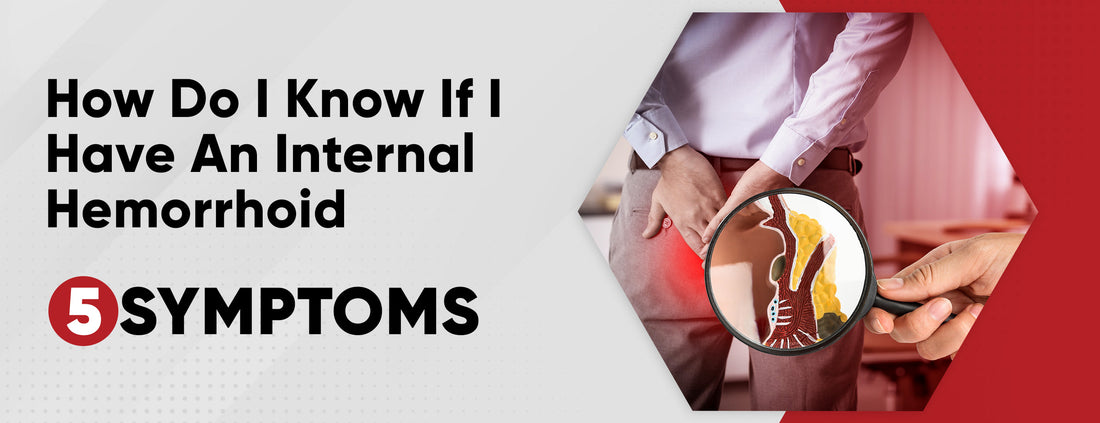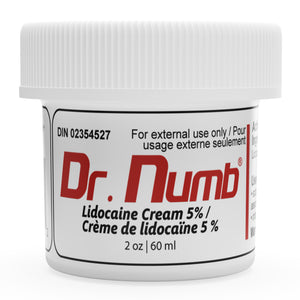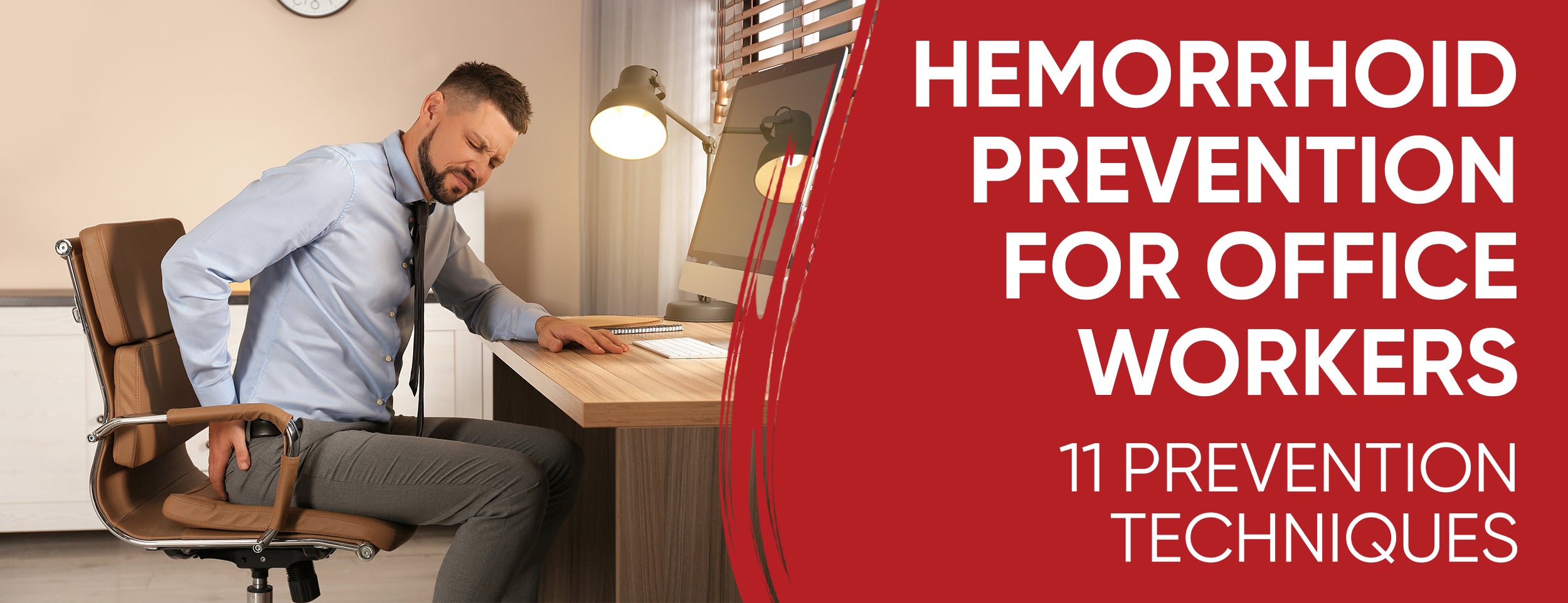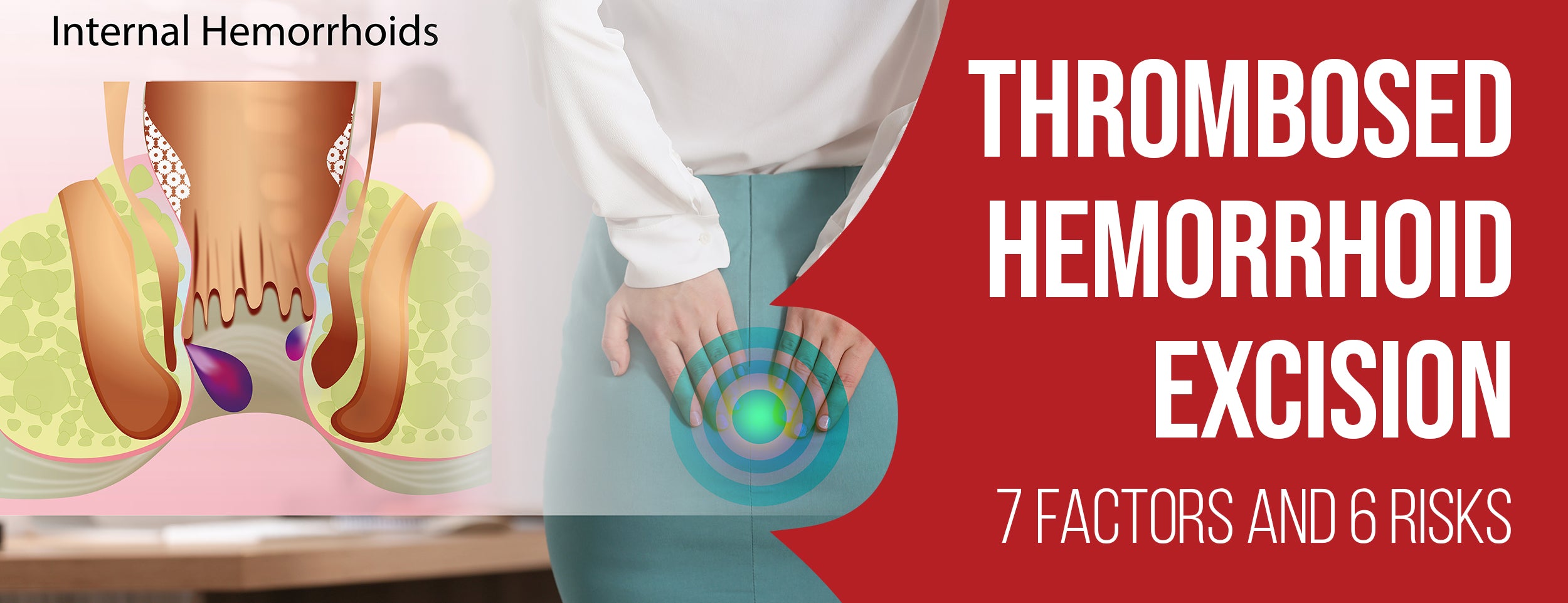Internal hemorrhoids are quite common, yet not many people know much about them. While they can be uncomfortable and painful, they can also go unnoticed if they do not present any symptoms.
So, how do you know if you have internal hemorrhoid? In this blog post, we will be discussing the signs and symptoms of internal hemorrhoids, so you can be aware of what to look out for.
How Do I Know If I Have An Internal Hemorrhoid: Symptoms

The symptoms of internal hemorrhoids may vary from person to person, and some people may not experience any symptoms at all. If you do experience symptoms, they may include.
Pain or Discomfort in The Anal Area
A common symptom of internal hemorrhoids is pain in the anal area. These are swollen veins that develop inside the rectum and may remain unnoticed until they begin to cause discomfort.
The discomfort may range from mild irritation or itching to severe pain, depending on the severity of the condition. The pain could also increase during bowel movements as the passing stool irritates the swollen veins. Internal hemorrhoids are often characterized by their location inside the rectum, which makes their symptoms different from external hemorrhoids.
Itching Around the Anus:

Itching around the anus is one of the most common symptoms of internal hemorrhoids. When these veins become inflamed, they can cause intense itching, especially during bowel movements or when sitting for extended periods of time.
Itching around the anus is a result of the irritation caused by the presence of internal hemorrhoids. Burning, soreness, and discomfort can also result from this irritation. The itching may be more intense at night, causing discomfort and disturbing sleep.
There are several factors that can trigger itching around the anus in individuals with internal hemorrhoids. One of the most common factors is poor hygiene. When the anal area is not cleaned properly, fecal matter can remain in the area and cause irritation.
Wearing tight or synthetic clothing, using harsh soaps or wiping the anus vigorously can also contribute to irritation and itching.
It is important to note that itching around the anus is a common symptom of other conditions, such as fungal infections, bacterial infections, or inflammatory bowel disease. Therefore, it is crucial to consult with a healthcare provider to diagnose the cause of the itching and recommend appropriate treatment.
To prevent and alleviate itching around the anus caused by internal hemorrhoids, individuals should practice good hygiene by properly cleaning the area after bowel movements, wearing loose clothing and avoiding harsh soaps or wipes.
Over-the-counter creams or ointments containing hydrocortisone or witch hazel can help soothe the itching and reduce inflammation.
- Blood on your poop, on toilet paper after you wipe, or in the toilet bowl
- Feeling fullness in the rectum
- Anal prolapse (bulging tissue)
- Leakage is another common internal hemorrhoid symptom. It is caused by the presence of mucus that seeps from the anus.
These symptoms may get worse during bowel movements, especially if you strain to pass stool. If you experience any of these symptoms, it is important to speak with your doctor to determine the cause.
Grade of Internal Hemorrhoids:

Hemorrhoids affect many adults and can be a painful and uncomfortable medical condition. When veins in the rectum and anus become swollen and inflamed, they lead to uncomfortable symptoms such as pain, itching, and bleeding.
Internal hemorrhoids inside the rectum are classified into four different grades depending on their severity.
Grade 1: The mildest form, usually without noticeable symptoms.
Grade 2: May protrude from the anus during a bowel movement but will retract inside.
Grade 3: Protrude from the anus during bowel movements and need manual repositioning, accompanied by more significant symptoms like pain and bleeding.
Grade 4: The most severe, protruding outside the anus, extremely painful, and requiring immediate medical attention.
A physician should be consulted if you experience any hemorrhoid symptoms. With proper diagnosis and treatment, the discomfort and pain can be alleviated. Remember, prevention is better than cure.
Maintaining a healthy diet, hydration, and exercising regularly can help prevent internal hemorrhoids from occurring. Stay healthy, informed, and seek medical attention if necessary.

Location of Internal Hemorrhoids:
You may have internal hemorrhoids. These common conditions affect many individuals when the veins in the lower rectum or anus become inflamed and swollen. Unlike external hemorrhoids, visible outside the anus, internal hemorrhoids are located inside the rectum and can be easily overlooked.
Discomfort or Pain in the Anal Region:

Individuals with internal hemorrhoids may experience pain or discomfort in the anal region. This can make bowel movements or sit for extended periods of time problematic and uncomfortable.
Swelling or Lump Near the Anus:
A swelling or lump near the anus is a visible sign of internal hemorrhoids. It indicates that the vein inside the rectum has become swollen or inflamed. The lump may or may not be painful or tender to the touch.
Overall, if you experience any of the aforementioned symptoms, it is important to consult a medical professional to determine the underlying cause and develop an appropriate treatment plan.
Some cases of internal hemorrhoids can be managed through lifestyle modifications such as improving diet and exercise habits, while others may require medical intervention such as medication or surgery.
Internal Hemorrhoid Discomfort:
Do you experience discomfort in your rectal area? It could be caused by internal hemorrhoids and swollen veins inside the rectum. Symptoms include itching, burning, pain, and even bleeding during bowel movements due to the swollen veins rubbing against the anal walls.
Not all internal hemorrhoids cause bleeding. You may feel a fullness sensation, protrusion or bulging around the anus, or even prolapse outside the anus requiring manual reduction. Additionally, you may experience frequent bowel movements, mucus discharge, and bowel discomfort.
Don't suffer in silence. Seek medical attention if you suspect you have internal hemorrhoids. Your healthcare provider can diagnose and suggest appropriate treatment options. From simple dietary changes to more invasive procedures like rubber band ligation and surgery, your healthcare provider will help alleviate your discomfort.
Prolapsing Internal Hemorrhoids:

During bowel movements, have you noticed bright red blood on the toilet paper or bowl? If the hemorrhoid expands and protrudes from the anus, it may be a prolapsing internal hemorrhoid. It can cause significant irritation when clothing rubs against it or when bowel movements occur.
While not dangerous, monitoring and prompt medical attention are essential to prevent complications and speed up healing. To determine the extent of prolapse, a physical examination may be needed. Now is the time to seek help.
Painful Internal Hemorrhoid
Internal hemorrhoids are a common condition that can be quite bothersome and painful. One of the most common symptoms of internal hemorrhoids is rectal pain, which may be mild or severe. If you are experiencing pain in your anus or rectum, you may have an internal hemorrhoid.
Painful internal hemorrhoids occur when the veins inside the rectum become swollen and inflamed. Numerous factors can cause this, including constipation, diarrhea, straining during bowel movements, and sitting for prolonged periods.
The rectum can also feel full, itchy, and bleed from internal hemorrhoids. Blood on your toilet paper after a bowel movement could indicate internal hemorrhoids.
If you are experiencing any of these symptoms, seeing a doctor for an evaluation is important. Depending on the severity of your internal hemorrhoids, your doctor may prescribe dietary changes, exercise, or over-the-counter medications. Hemorrhoids may need to be surgically removed in more severe cases. People with internal hemorrhoids can manage their symptoms and find relief with proper treatment and care.
Bleeding Internal Hemorrhoid:

It could be internal hemorrhoids hidden from sight. Since the symptoms usually don't appear until the condition is severe, it isn't easy to detect.
The primary symptom to look for is bleeding - bright red blood on toilet paper or bowl following a bowel movement. Other conditions, such as anal fissures or cancer, can also cause the disease.
If you have any of these symptoms, don't hesitate to seek professional help for a proper diagnosis and treatment plan.

Internal Hemorrhoid Symptoms Male:
Internal hemorrhoids are a common condition, especially among males. It may cause lower abdominal discomfort, bleeding during bowel movements, or excessive straining. You may feel full in the rectum even after a bowel movement.
It can be hard to detect internal hemorrhoids, but keeping an eye out is critical. Bleeding can also be a sign of colorectal cancer, so seek medical attention if you experience rectal bleeding.
In the event of sudden changes in bowel movements or if the symptoms persist, you should see a doctor. You can significantly reduce your quality of life with internal hemorrhoids.
Symptoms can be significantly improved through lifestyle changes and medical treatment. Don't hesitate to seek medical attention whenever necessary.
Internal Hemorrhoid Symptoms Female

Internal hemorrhoids are a common affliction affecting many people, particularly women. These occur within the rectum and can cause discomfort and pain when swollen or inflamed.
There are several internal hemorrhoid symptoms, such as itching, irritation, bleeding, and pain. Symptoms vary in severity and duration depending on the cause.
One of the most common causes of internal hemorrhoids in women is pregnancy. The increased pressure can cause vein strain within the rectum, resulting in swollen hemorrhoids. Other causes may include constipation, obesity, or a sedentary lifestyle.
If you suspect you suffer from internal hemorrhoids, seek medical advice. Healthcare providers can diagnose your condition and recommend treatment options.
Diagnosis of Internal Hemorrhoids
Diagnosis of internal hemorrhoids can be determined using various diagnostic approaches.
Medical professionals typically examine the anus and rectum with an anoscope, sigmoidoscopy, or colonoscope to assess internal hemorrhoids. An examination may reveal hemorrhoids, internal tissue damage around the hemorrhoids, and bleeding.
How Doctors Evaluate Internal Hemorrhoids:

If you are experiencing symptoms such as bleeding during bowel movements, pain, discomfort in the anal area, itching, swelling, or a lump near the anus, it is important to see a doctor.
A doctor can perform a physical exam to evaluate the anus and rectum and determine if any internal hemorrhoids are present.
Tests Used to Determine the Presence of an Internal Hemorrhoid:
Doctors may also perform additional tests to determine if internal hemorrhoids are present. These tests can include a sigmoidoscopy or colonoscopy, where a small camera is inserted into the rectum to examine the inside of the colon and rectum.
Other tests may include a digital rectal exam, where the doctor inserts a gloved finger into the anus to feel for any abnormal lumps or bumps.

Treatment Options for an Internal Hemorrhoid
If it is determined that you have an internal hemorrhoid, treatment options may include over-the-counter creams, ointments or suppositories that can help relieve symptoms such as itching and pain.
During rubber band ligations, blood flow is cut off to hemorrhoid, and it shrinks, commonly recommended for severe cases. Surgery may be necessary for larger hemorrhoids that do not respond to other treatments.
Home Remedies for an Internal Hemorrhoid

In addition to medical treatment, there are home remedies that may help alleviate symptoms of internal hemorrhoids. These can include soaking in a warm bath or using a sitz bath, taking over-the-counter pain medication, increasing fiber in your diet, drinking plenty of water, and avoiding straining during bowel movements.
Conclusion
Internal hemorrhoids can cause a range of symptoms, including bleeding, itching, and discomfort.
If you suspect that you have an internal hemorrhoid, do not hesitate to contact a medical professional for help. Proper diagnosis and treatment can effectively manage your symptoms and improve your overall quality of life.
Additionally, following a healthy diet and lifestyle, as well as practicing good hygiene, can help reduce your risk of developing hemorrhoids in the future. Remember, early intervention is key to managing and preventing internal hemorrhoids.











![Precautions & 6 Steps to Draining Thrombosed Hemorrhoids [DIY]](http://drnumb.ca/cdn/shop/articles/Draining_Thrombosed_Hemorrhoid_Yourself__6_Steps_8_DIY_Tips_With_Precautions.jpg?v=1713931775)

